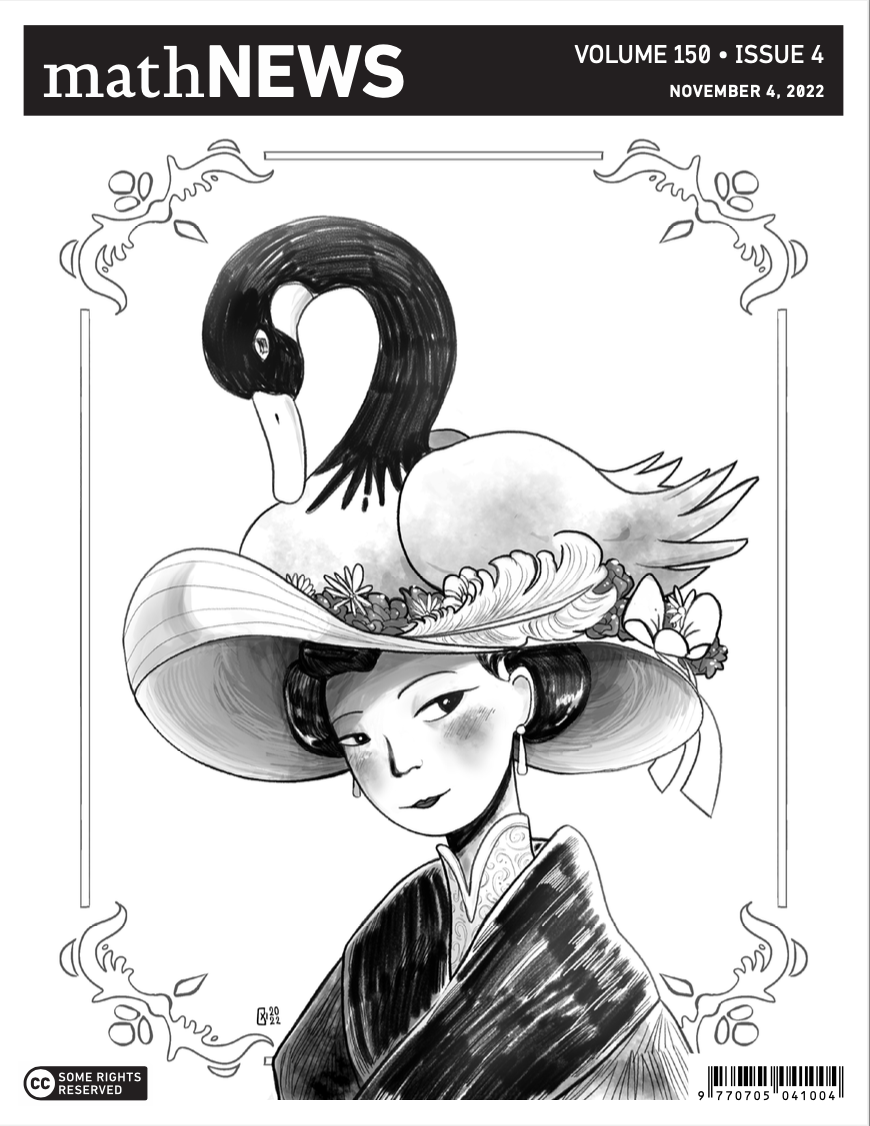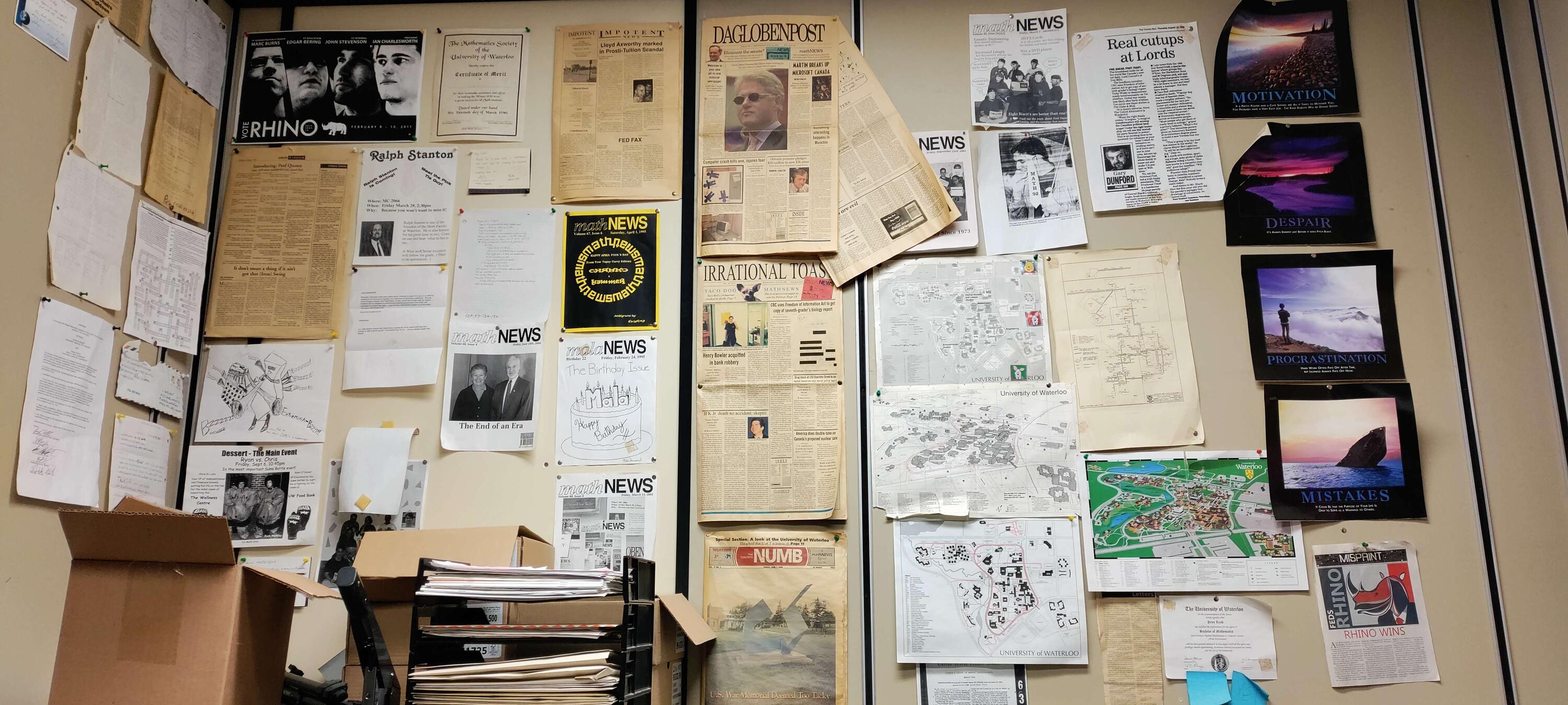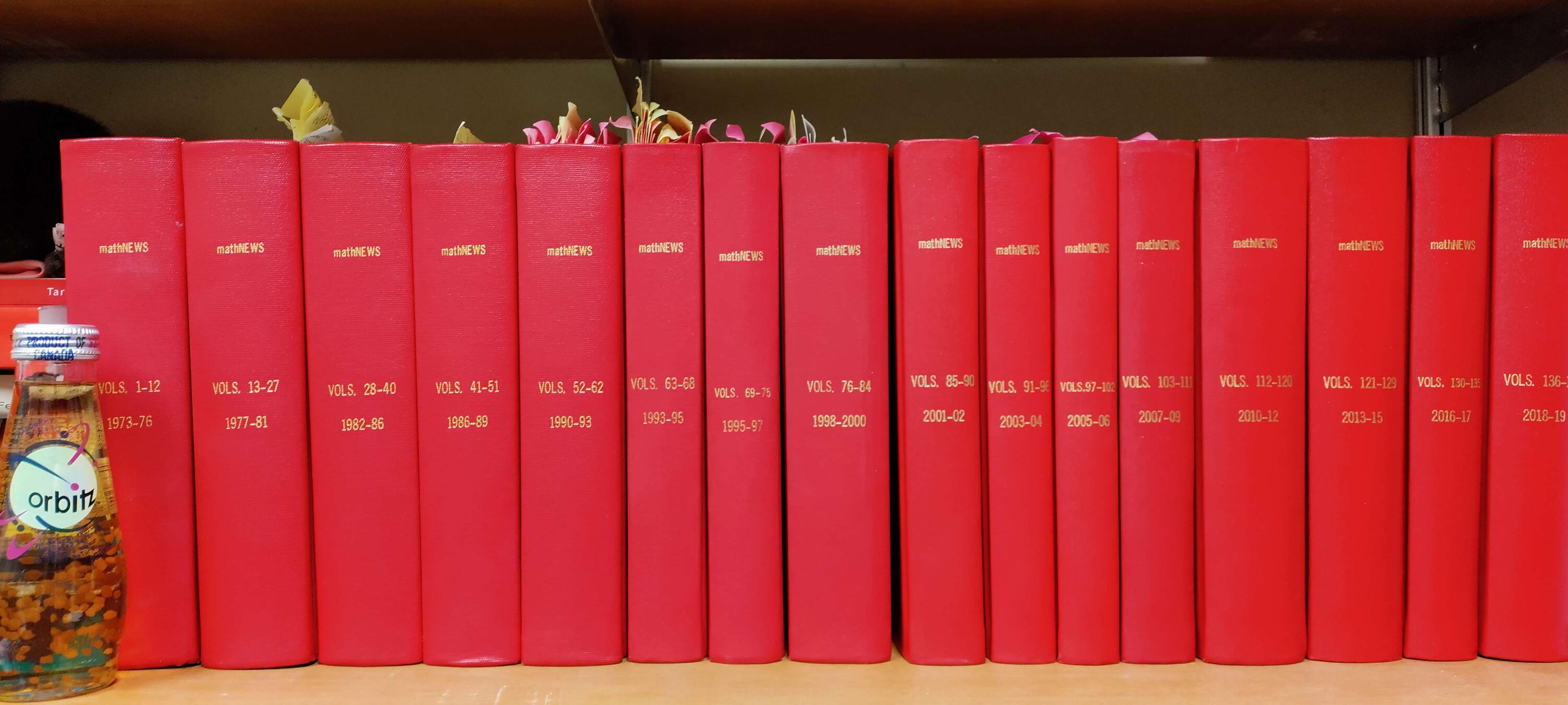
The first issue, published January 25, 1973, was introduced as an informal alternative to existing student publications, containing “not much math and even less news.” mathNEWS (the title styling has remained both consistent and deeply insistent) featured a mixture of hand-drawn comic strips, fiction, nonfiction pieces on everything from mathematical proofs to cafeteria food, and classified ads. Students advertised intramural sports teams and looked for missed connections, conducted interviews with experts and wrote long musings on failed romantic endeavors.
mathNEWS receives funding from MathSoc, the undergraduate student association, but is editorially independent from it, allowing for a wide variety of material and perspectives. The content can be “authentic, expressive, humorous, serious, or reflective,” says Clara Xi, a fourth-year computer science student and editor. While editors proofread content and make sure there isn’t anything “that will get us sued,” the writers are given a huge amount of leeway.
In the fifty years since its inception, surprisingly little at mathNEWS has changed. The staff is still all-volunteer: writers and editors meet every other Monday night to work on the biweekly issues, and are rewarded with free pizza and camaraderie. The publication process has gotten much easier, with a switch from typewriters and physical layouts to shared Wordpress documents and digital files. The actual newsletter, however, is still released mainly in print: 750 copies, every couple Fridays or so, dropped off across campus and immediately picked up by eager readers.

“I think it’s really important that it exists in print, because mathNEWS is something that people casually pick up on their way to class,” Xi says. The content is deeply contextual: recent issues, for example, include collections of funny quotes from professors, or reviews of the best benches on campuses.
The newsletter also provides a vital outlet for community and creativity. “It doesn’t have to be about stuff like computer science,” says Daniel Matlin, a fourth-year computer science student and editor. “It allows people to get their thoughts out about whatever is important to them, which is a very broad category.”
In an increasingly digital age, readership has only gone up. When she started working on mathNEWS prior to the pandemic, Xi reflects, there were around 20 writers contributing to issues. The COVID-19 pandemic, of course, sent everyone home for months, but digital meetings and PDF issues continued. When production resumed in person, 50-60 people showed up for production night – and they just kept coming. The most recent issue, released in December, is 56 pages long, all of it original content.
For Evan Girardin, a fourth-year computer science and pure math student and mathNEWS editor, the homemade, retro feel of mathNEWS is key to its success. He encountered his first issue during his first week at Waterloo: the orientation issue is always “snuck into” students’ welcome bags. He thought the publication seemed funny and highly specific, and he was eager to make friends, so he started attending production meetings.

Four years later, he’s reflecting on the mathNEWS legacy. “There’s a lot of history – oral tradition, almost,” he says. The mathNEWS office is papered with old issues and doodles. There’s a plank from the Red Room, a central room from earlier in the building’s history that was torn out. Next to a neat row of cloth-bound archival issues, in pride of place, is a bottle of the 1997 fad drink Orbitz: it was brought to a meeting, never opened, and has remained – totemic – ever since. “It’s actually in our constitution now,” he laughs. “If mathNEWS ever dissolves the last editors have to drink the Orbitz.”

In a nod to the 50 years of inside jokes, late nights in the office, and student creativity, this year’s issues will feature content and design styles from the archives, as well as interviews with and reflections from past writers and editors. While some things have changed, the editors are confident that the same irreverent, affectionate spirit that began and sustained it will keep mathNEWS going for years to come. “I think the reason that mathNEWS has persisted for 50 years,” Girardin says, “is because people care. They care about making it happen.”
The first 2023 issue of mathNEWS comes out this Friday. You can check out past issues on their website.